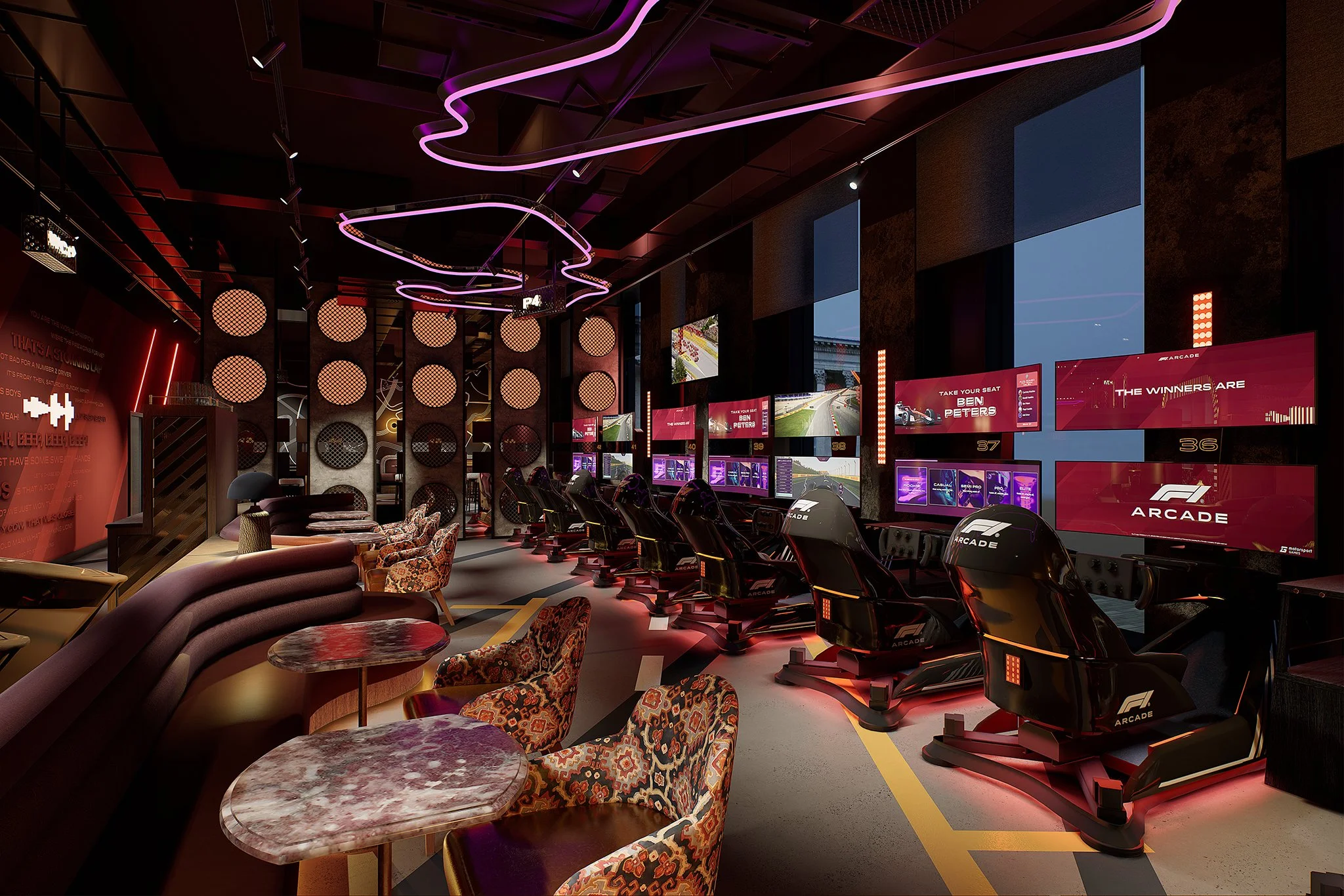Three Game-Changing Concepts Shaping Malls in 2025
Beat the Bomb - Atlanta, GA
Malls in 2025 aren’t just focused on retail, they're evolving into dynamic ecosystems built around wellness, entertainment, and elevated food experiences. Landlords are moving beyond traditional anchors and embracing experience driven concepts that drive traffic, increase dwell time, and bring fresh energy to underutilized space. Here are three high-performing concepts entering retail centers across the U.S. that are reshaping tenant mixes and driving traffic.
1. Wellness Hubs
SpaceTime Flotation Center - Lincoln Park, Chicago
Health and wellness have moved beyond boutique gyms. A new generation of wellness concepts is emerging, offering a full sensory and service-based experience under one roof.
Examples:
Remedy Place – A “social wellness club” combining IV therapy, infrared saunas, lymphatic drainage, and guided breathwork.
Float Lab – Offers a signature sensory-deprivation experience using patented isolation flotation chambers for deep relaxation, mental clarity, and recovery.
SweatHouz – Boutique wellness lounge combining infrared sauna sessions, cryotherapy, and recovery therapies with a stylish, social environment designed to make self-care a shared experience.
Squeeze Massage – A membership-based massage studio offering personalized, affordable, and convenient therapeutic massage services in a modern, accessible setting.
Stretch Lab – A fast-growing wellness studio offering one-on-one assisted stretching sessions by certified “Flexologists”.
Clean Your Dirty Face Facial Bar – A modern facial bar delivering deep-cleansing, customized skincare treatments in a vibrant, approachable setting. Combining expert exfoliation, extraction, and hydration, it’s designed to refresh and revitalize all skin types.
Why it works:
According to ICSC, wellness-focused tenants increase dwell time by up to 28% and drive repeat visits. These concepts appeal to a high-income, health-conscious demographic with strong lifestyle loyalty and social influence, translating to long-term tenant performance.
2. Immersive Entertainment
F1 Arcade, Birmingham
Experiential entertainment is filling former anchor spaces with immersive, ticketed attractions that appeal to groups, families, and digital natives alike.
Examples:
Sandbox VR – Free-roam virtual reality gaming with cinematic-quality graphics and multiplayer adventures.
F1 Aracde – A premium racing simulation experience combining high-end F1 simulators with a full-service bar, upscale dining, and social gaming.
Museum of Illusions – Interactive optical illusions and immersive rooms
Beat the Bomb - A team-based immersive gaming experience combining escape room challenges, high-tech arcade play, and a countdown to a real paint or foam bomb explosion.
Photo Booth Museum - Brings together a collection of vintage booths in one immersive space where anyone can walk in, strike a pose, and experience the joy of snapshots.
BRKTHROUGH – A tech-driven, team-based arena with 60+ interactive rooms where players race the clock to solve physical, mental, and skill challenge, combining arcade energy with escape room strategy.
Why it works:
These experiences boost off-peak visitation and bring in non-traditional mall users. JLL reports that malls with immersive tenants see a 30% to 40% lift in non-retail traffic and increased spend with adjacent F&B operators. Importantly, these experiences can’t be replicated online.
3. Next-Gen Culinary
Magnolia Bakery, New York City
Food remains the top driver of foot traffic, however, consumers are increasingly seeking tech-forward and design-savvy culinary concepts.
Examples:
Jars by Fabio Viviani – Dessert served in Instagrammable jars, designed for quick service and high visual appeal.
Wonder – Compact “food hall” locations housing 20–30 chef-driven restaurant concepts under one roof, all owned and operated by Wonder. Customers can order from multiple menus in one transaction for dine-in, pickup, or delivery.
Soft Serve Artisanal Ice Cream (Jeni’s Ice Cream, Salt & Straw, Wanderlust Creamery) – Unique flavors with visually stunning presentations.
Viral Cookie & Dessert Concepts (Levain Bakery, Crumbl Cookies, Magnolia Bakery) – Irresistible sweet treats known for viral flavors and eye-catching presentations. These concepts are crowd favorites known for high social media engagement and repeat visits.
X-Pot – A high-end, immersive hot pot dining experience combining luxury cuisine with cutting-edge technology. Features animated projection tables, robot servers, and vibrant ambiance for an unforgettable social dining experience.
Local Kitchens – Tiny, community-driven food halls hosting 4–6 local restaurants in micro spaces of 1,000–1,500 SF. Seen in California and Texas, offering high culinary variety and strong local brand appeal.
Why it works:
CBRE data shows food and beverage drives 60% of visits to lifestyle centers, and shoppers spend 35% more when dining is part of the experience. These modern fast-casual concepts maximize footprint efficiency while meeting consumer demand for convenience and novelty.
Shaping What’s Next—Together
Each of these concepts reflects a broader industry shift from transactional shopping to experiential value. The most landlords in 2025 are starting to curate spaces that respond to evolving consumer behavior, not just filling space.
At Blue Butterfly, we partner with landlords and tenants identifying, vetting, and placing next-gen concepts into spaces where they can truly thrive. Whether you’re repositioning a struggling center or developing a cutting-edge retail destination, we’re here to connect the right brands with the right spaces to help shape what’s next in retail. Let’s talk.





